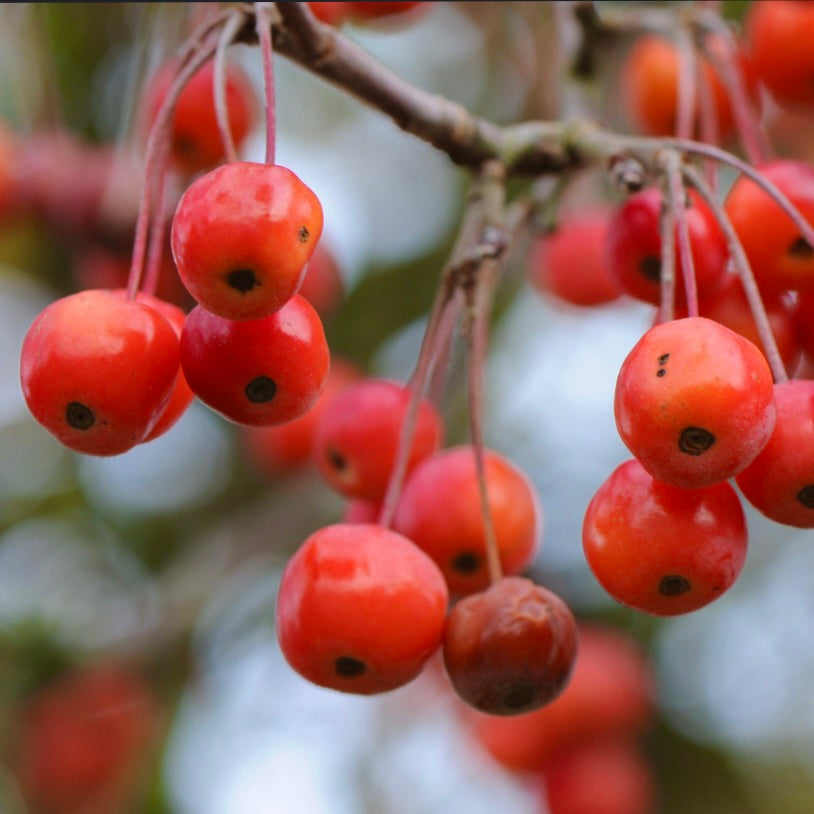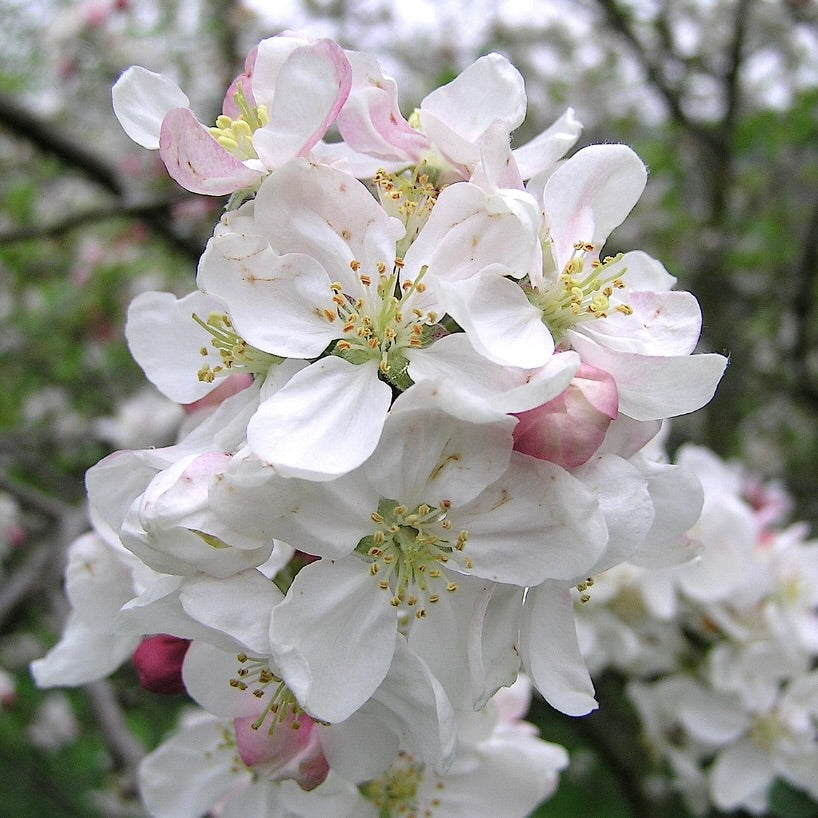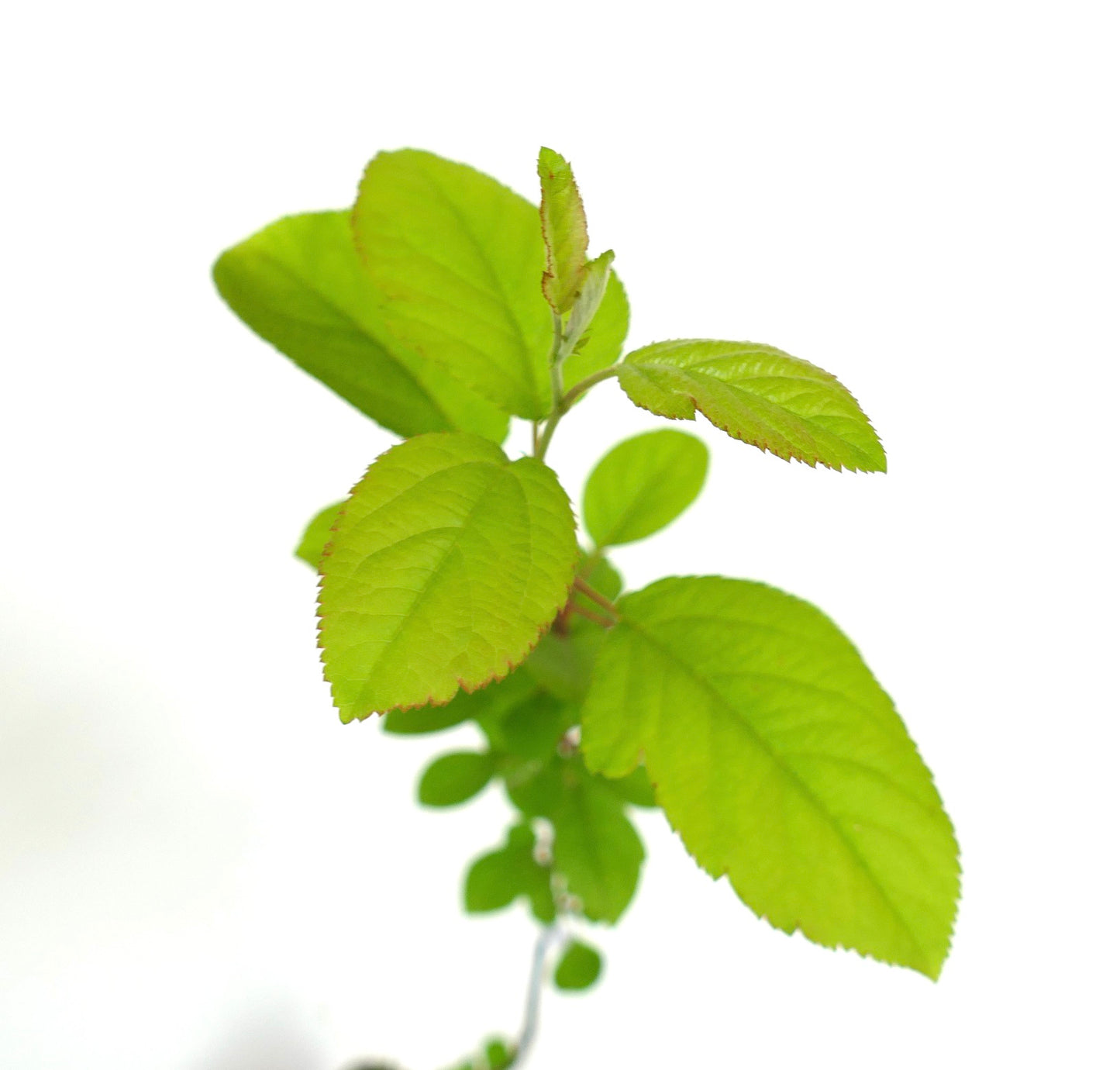- Catalogue Plants
Malus hupehensis 30-70cm
Malus hupehensis 30-70cm
Couldn't load pickup availability
Plant Description
Malus hupehensis, commonly known as the Hupeh Crabapple or Tea Crabapple, is an attractive deciduous tree native to China. This ornamental tree is highly valued for its delicate appearance, profuse spring blossoms, and small, colorful fruit. The Hupeh Crabapple typically reaches a height of 20 to 30 feet (6 to 9 meters) and is known for its graceful, spreading canopy. It is a wonderful addition to gardens, parks, and landscapes, providing beauty and interest throughout the seasons.
The key feature of Malus hupehensis is its abundance of fragrant, five-petaled flowers that adorn the tree in early to mid-spring. The blossoms are typically white or pale pink, creating a stunning visual display. After flowering, the tree produces small, red to orange-red fruit that resembles tiny apples. These fruits are edible but are usually quite tart, making them better suited for making jams or jellies. In the fall, the tree's dark green leaves often turn shades of yellow, orange, or red, providing a final burst of color before winter.
Cultivation:
-
Sunlight: Hupeh Crabapples thrive in full sun to partial shade. Plant them in a location that receives at least 6 hours of direct sunlight each day for optimal flowering and fruiting.
-
Soil: Well-draining, loamy soil with good organic content is ideal. A slightly acidic to neutral soil pH is preferred. Ensure proper drainage to prevent waterlogged roots.
-
Watering: Keep the soil consistently moist, especially during dry spells and the tree's establishment period. Deep, regular watering is important, but avoid overwatering to prevent root rot.
-
Mulching: Apply a 2-3 inch (5-8 cm) layer of mulch around the base of the tree to retain soil moisture, regulate soil temperature, and suppress weeds. Leave a gap between the mulch and the trunk to prevent rot.
-
Pruning: Prune lightly to shape the tree and remove dead or diseased branches. The best time for pruning is late winter or early spring before new growth begins.
-
Fertilization: Fertilize with a balanced, slow-release fertilizer in early spring to promote healthy growth and flowering. Avoid excessive nitrogen, as it can lead to excessive foliage at the expense of flowers and fruit.
-
Protection from Pests and Disease: Keep an eye out for common crabapple pests and diseases, such as aphids, apple scab, and cedar-apple rust. Proper maintenance and good air circulation can help prevent these issues. Treat any problems promptly if they arise.
-
Hardiness: Malus hupehensis is hardy in USDA zones 4 to 8, making it suitable for a variety of temperate climates.
-
Propagation: You can propagate Hupeh Crabapples from seeds, although this method may take several years to produce flowering trees. Grafted or rooted cuttings from established plants are a quicker way to grow this tree.
Malus hupehensis is a delightful addition to any garden or landscape, with its exquisite spring blossoms and colorful fruit. By providing the proper care and attention to its preferences, you can enjoy the beauty of this charming tree in your outdoor space.
IMPORTANT: Please be aware that picture 1 and 2 show adult plant not for sale, the offer is for a plant in the dimension indicated in title description like the one shown in pictures 3-4.
Disclaimer: Please keep on mind that the plant may have grown since pictured. Also be aware that most plants change across seasons. If present foliage could have been fallen or change in its color.
Botanical family: Rosaceae
Botanical genus: Malus
Botanical species: Malus hupehensis
SKU:BA-0957-S
Cultivation
Cultivation
Additional information
Additional information
Plant Height: 30-70cm
Plant Diameter:
Picture Taken on:
Pot Size:
Grafted/Not Grafted:








